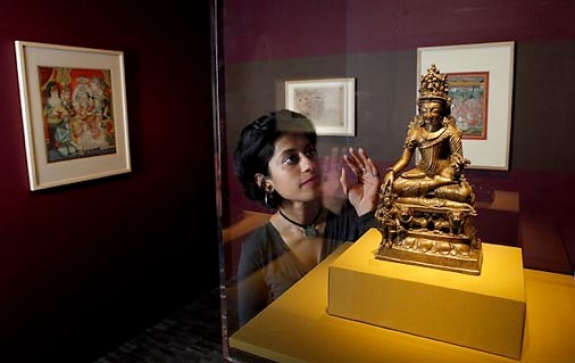With a collection of 17,000 objects that span 6,000 years, San Francisco's Asian Art Museum is among the most impressive of its kind in the world.
The challenge now before it: avoid becoming a thing of the past.
Last year, the recession left the museum in financial turmoil. Nearly unable to repay millions of dollars in loans, it struck an unprecedented deal in which the city guaranteed the museum's $98 million debt.
Now, with the museum's finances on more stable ground, its leaders are seeking to make a comeback. On the way are exhibits intended to attract a broader audience, a campaign to raise $20 million and other money-making strategies.
"To me, ancient art, no matter when it was made, is never static," said Jay Xu, the museum's director, in a phone interview during a business trip in Taiwan. "It always has life. It's a point for knowledge, discovery."
Nearly 360,000 visitors came to the Asian Art Museum in the Civic Center in fiscal 2008-09 - but that number plummeted to 187,000 in 2010-11.
To help boost attendance, the museum hopes that new collections premiering this fall will appeal to more families and young adults while still luring art aficionados.
A show opening Oct. 21 will center on India's royal courts from the early 18th century to the mid-20th century. Titled "Maharaja," a Sanskrit word meaning "great king," the exhibit will showcase paintings, photographs, outfits, jewelry, furniture and other artifacts from palace life.
A related exhibition that starts Nov. 11 - "Deities, Demons and Dudes with 'Staches" - will offer a contemporary take on the culture. In a series of digitally drawn illustrations, Pixar animator Sanjay Patel employs pop-art hues, crisp geometric forms and cartoon figures to depict royal India.
"When we look at Sanjay's art in the context of the treasures in the 'Maharaja' exhibit, we can understand how he is inspired," Xu said. "In doing so, we're really connecting the art of the past with the art of today."
Making money
Christine Anagnos, executive director of the Association of Art Museum Directors, said the Asian Art Museum is not alone in struggling during the down economy, but that there are ways to help preserve the bottom line.
One thing museums can do is try to attract audiences by showing collections in new ways, she said.
She said Patel's exhibit at the Asian Art Museum is "a fascinating idea because it's an interpretation of art that is hundreds and hundreds ... of years old."
Boosting attendance is just one way the museum is trying to generate more money. In 2009, it started charging an additional $5 to see special exhibits. It also cut the annual number of exhibits by a third and lengthened each show's run time to six months from three months - moves that have saved hundreds of thousands of dollars, said Mark McLoughlin, the museum's chief finance and operating officer.
And this spring, Xu created the position of chief engagement officer, tasked with coordinating the museum's public relations, marketing, business development, and digital and Web presence. In September, the museum unveiled a new logo - an upside-down "A" meant to convey a sense of the unexpected.



